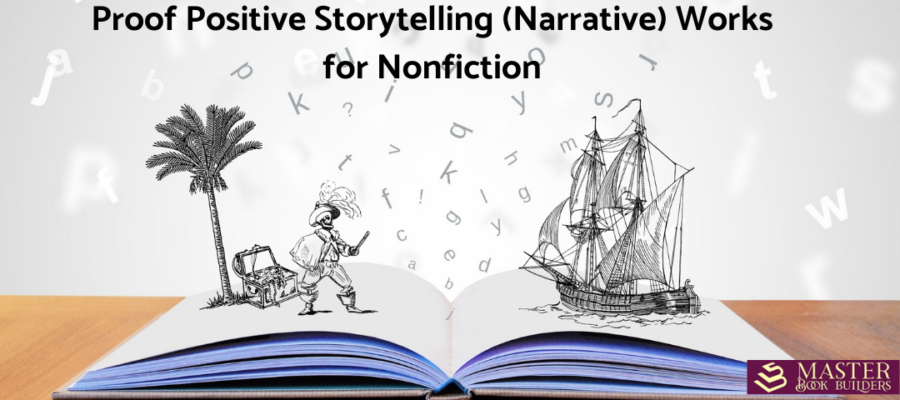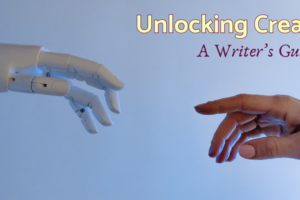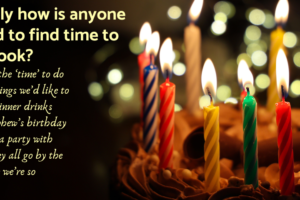Proof Positive Storytelling (Narrative) Works for Nonfiction
So, what’s the story? Is storytelling a thing of Stephen King and J.D. Robb and those authors like them, but not for authors like you? Do you think stories are okay for fiction but in your business book it needs to be all facts and figures?
This is an area I am passionate about. I want my authors to write stories that are believable. Stories that show angst and worry and even fear. We’ve all been there, so worried and anxious that tomorrow we won’t be able to pay our light bill. We’ve all lain awake at night shivering because we turned the heat down so low frost is growing on the windows.
And we’ve been there when things went right. When joy was overwhelming. When we flooded LinkedIn with announcements of our good fortune. And we basked in the accolades.
But just saying the words, as I did here, is not enough. Stephen King and J. D. Robb know what they’re doing. They’re pulling the reader into the story with a lifetime of experience weaving imaginary worlds we lose ourselves in, turning page after page, unaware of our surroundings, eager to get to the ending and dreading it all the same because we don’t want the story to end.
That is how you tell a good story. And that is how I want my authors, my business book authors, to tell a story.
I think business storytelling works because:
Stories are the lifeblood of humanity. We are hard-wired to tell stories, to listen to stories. Raw data and “just the facts” leave us cold and bored. A Nielsen study in 2017 tells us that storytelling plays a “critical role” in differentiating yourself from your competitor.
Just look around you. Brands are telling stories every day in their marketing. From Progressive with Flo and her team to perfume brands with major celebrities at fancy dress parties to pet food companies reminding us our pets are family, too. The one-minute commercial has become a story, and it engages us far more effectively than just “here’s why you should buy our stuff.”
Same for you and your business book. Your stories have to show me why I should keep reading. Why I should believe in you and join your online community or attend your workshop.
Oh, but there’s more! Stories create enhanced memorability.
I had the best conversation with a prospect just a few days ago. We talked about his book and why he was writing it. He told me a good bit about his background – where he studied writing, and where he’d been published, but the one thing I remember most, right now, is the story he told about working with an editor who ultimately changed his writing so much, he couldn’t recognize it. He had to go back and start the book over, to reinsert his voice, and not hers.
The story was emotional for him. I could hear the angst in his voice (we were on the phone). And I immediately commiserated with him. The story left me feeling almost as bad as it left him feeling.
We both understood and could relate. And that’s when the connection was made.
This research by Forbes explains it all, in just a few sentences –
“Cognitive psychologist Jerome Bruner suggests we are 22 times more likely to remember a fact when it has been wrapped in a story. Why? Because stories are memorable. Stories help us grab the gist of an idea quickly. They trigger our emotions.”
Telling stories also entices people to pay more for our goods and services.
Well-crafted stories – notice the word crafted. I want my authors to craft, design, compose their stories, not just tell them – can increase the perceived value of products or services.

Just think of your favorite author. Your favorite ice cream. Your favorite coffee shop. How do you feel when you think of them? They aren’t just businesses. Or writers. Or tantalizing food for our taste buds. They’re people. They demonstrate their humanity by telling stories – brand stories but stories about themselves, also.
They have pets. They like to travel. They hike or ski or work in the soup kitchen. They showcase their humanity, and it makes us think, “They’re just like me.” And so, we buy their products. Often without thinking of price. We’re not buying the product; we’re buying a piece of them! Emotionally, that story connects us to them in ways charts and graphs cannot.
Tony Robbins is a master at this. Amy Porterfield shines at this. And our client, Mary T. O’Sullivan, author of The Leader You Don’t Want To Be, is fantastic at it.
I want my authors to achieve that in their books. I want their stories to come alive to their readers. I want their readers to laugh and cry with them, the same way they would in real life.
Stories give you a competitive advantage.
In a crowded marketplace, storytelling can help a business stand out from competitors by creating an emotional connection with customers. It does this with your book, also. Readers are more compelled to work with you or buy what you’re selling, if they’ve connected with you from the stories you tell in your book.
My goal is to help you tell stories that will resonate with your readers by teaching you the skills fiction authors use to write their stories.
- Setting the scene.
- Creating the mystery.
- Making the characters and their actions believable.
- Understanding that the protagonist is not always good, and the antagonist is not always bad.
Fiction writers learn how to build tension and suspense over time. They aren’t born knowing how to do that. It’s a matter of studying and writing, and reading, and writing. Fiction is meant to engage the reader in a world that doesn’t exist, even if it’s downtown Chicago. The world in a fiction book is completely made up, though possibly representative of a real place in our world. The writer has made this world up in their minds and readers “suspend disbelief” as they read because the story is so compelling. E.g., Does Chicago really have a werewolf in the mayor’s office? In the book it does, so I believe.
In your business book, you’re probably not going to make up a whole new world. There won’t be werewolves snarling in the shadows of some cold alleyway. But perhaps there will be metaphorical werewolves, trying to prevent you from succeeding. Just as in fiction, when you write about them, you must give the reader a reason to suspend disbelief. They need to believe in the suspense you create. They need to feel empathy. They need to be surprised, now and then.
Good writers, fiction or nonfiction, learn how to do this because readers demand it. That kind of storytelling creates a competitive advantage – now, the reader is mesmerized and wants more.
Here are some key ways to incorporate storytelling into your nonfiction book:
- Use real-life examples and anecdotes – told with heart. Bleed On the Page – the title of my new book, coming soon in 2025.
- Follow a narrative structure – look to traditional story arcs with a setup, rising action, climax, and resolution.
- Learn how to use dialogue. Let us see what you’re ‘thinking’ and what your other characters are thinking. Talk out loud, even if you didn’t in real life. Make the story come alive!
- Think of the people in your story as “characters” in a novel. Use evocative language to bring them to life.
- Set the scene. Draw a colorful picture that allows readers to visualize what you’re talking about. If it’s downtown Chicago, show me. If you can describe something relevant but unknown to me, I’ll be even more engaged.
- Build tension and momentum. Keep readers guessing. Don’t spill the candy in the lobby, as a friend of mine use to say. Pose questions or dilemmas early on that get resolved later.
- Insert metaphors, similes, and imagery to make your story more believable. The myth structure of stories we all learned as children can help here.
- Make it your own by using your signature creative voice. This is one of the most effective ways to stand out from the crowd. Write it as YOU would speak it, let the reader hear you in the narrative.
This is what I want for my writers. I want stories that come alive. I want my authors to embrace fiction elements. Craft your story. Make it a ballet. Sculpt a living, breathing statue, a piece of art that makes your book better than any other book out there.
If you’re ready to write like this, if you’re ready to turn your book into more than a PowerPoint presentation full of charts, graphs, facts, and figures, maybe we should talk. Visit me on LinkedIn and ring my bell.
Sign up for the Smart News newsletter where Tom and I share content like this every week.






Leave a Reply